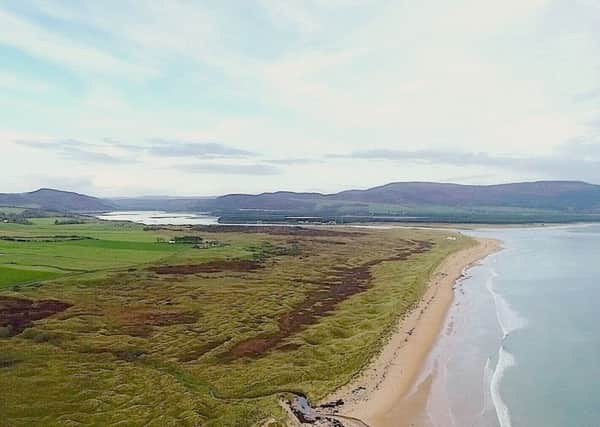Ilona Amos: 101 reasons to stop the planned Coul Links golf course


A 10-page report from the British Lichen Society identified 101 species of lichen at Coul Links, near Embo, in Sutherland. Of these, 17 were considered notable, four of which appearing on the international red list of species needing urgent conservation and on Scotland’s own list of top conservation priorities. The same area is home to an ultra-rare insect, the Fonseca’s seed fly, which is found nowhere else in the world. It boasts a rich variety of other wildlife, including many threatened species of animals, plants and birds. Its environmental value is such that it is recognised by the EU as a Special Protection Area (SPA) and a UK Site of Special Scientific Interest (SSSI).
But it will soon also be the location of a world-class championship golf course, after Highland Council gave the green light to plans laid out by US developers. The 18-hole golf course will cover 22.7 hectares in total, with 14 hectares inside the SSSI.
Advertisement
Hide AdAdvertisement
Hide AdScotland enjoys international recognition as the home of golf, so it’s not surprising such an idyllic spot has attracted interest from one of the world’s biggest names in the sector. Mike Keiser, the billionaire owner of several resorts around the world – including the massive Bandon Dunes complex in Oregon – is considered the key rival to Donald Trump when it comes to luxury golf. He prides himself on his environmental sensitivity, and has pledged to improve the Sutherland site.
“The land is not going to be destructed,” according to the development team’s blog. “Our plan will protect Coul Links environmentally, forever.” They have also promised the scheme will generate 250 jobs and bring in £60 million for the local economy in its first 10 years of operation.
Many neighbours and local businesses have expressed support for the proposals on the basis of the benefits to the area. At the same time, pretty much all of the country’s leading environmental and conservation organisations – from the Scottish Wildlife Trust to Plantlife, RSPB Scotland and the National Trust for Scotland, not to mention the British Lichen Society – have said the course should not be built on the dunes.
I can understand why, in an area that has never really recovered from the Clearances, that councillors have chosen to ignore recommendations from their own planners and grant consent.
But surely lessons must be learned from Donald Trump’s controversial course at Menie in Aberdeenshire, which was also created on protected dunes. Scottish Natural Heritage is still reviewing whether the SSSI there should keep its designation after finding “habitat loss” and “damage” to the dune system caused by construction of the links course – despite claims from the Trump organisation that its environmental approach is “first class”.
I admit I’m not a golfer but Scotland seems well served by world-leading golf destinations. There are five in the area around Coul Links – two at Royal Dornoch and others at Tain, Brora and Golspie. We’re not so well off for pristine sand dunes and unique wildlife. These are irreplaceable. Scottish ministers must intervene and stop this development before the site is permanently diminished. The lichens alone represent 101 reasons it should be saved.
